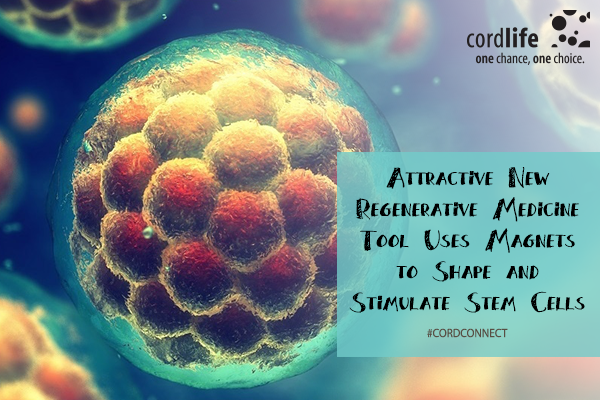How would it have been if we could develop embryoid bodies (EBs) from individual embryonic stem cells (ESCs) using technology? This could give birth to the development of the regenerative medicines and other therapies, which does not require an external supporting matrix as needed by the traditional regenerative technology to create a coordinated assembly.
All this is possible with a cellular magnetic Legos. A technology developed by the researchers at the Laboratoire Matiere et Systemes Complexes (CNRS/Universite Paris Diderot) is capable of combining cells with the help of magnetic nanoparticles and magnetized miniaturized magnets. In order to differentiate, it does not need any supporting matrix. The best part of this technology is that it can develop any tissues and deform them at will.
An elaborate insight of the study has been detailed in Nature Communications. This tool infused with miniaturized magnets can be used as a great technology in the field of regenerative medicines and also in biophysical studies.
Since the demand of nanotechnology is ever growing for providing an unprecedented solution for diagnosis and regenerative therapy, we can feel its necessity in every sphere of medicines and biosciences. Hence, this finding is another milestone for the development of regenerative tissues or therapies sans an external supporting matrix.
However, for scientists it is not viable to use matrix for the development of cohesive and organized cellular assembly for tissue generation. This is what they find it a great challenge, especially when they have to work on synthesizing thick or large sized organ or tissue. Or sometimes, the stimulation of these tissues is quite tough as they refuse to function properly as opposed to their counterpart cartilage.
Magnetic Cellular Lego At Scientists’ Assistance
A new tool developed by the scientists in France, uses magnetized stem cells to alter and stimulate stem cells into 3D shapes. By using external magnets, cells can be magnetized for differentiation, assembly, proliferation and stimulation through insertion of nanoparticles. This way, these cells are turning into cellular magnetic Legos. The magnetic Legos performs as a magnetic tissue stretcher, where mobile magnets captivate aggregate developed from the cells before a second the micromagnet could attract magnetized cells. The experimenting tissues on the magnetic tray behave independently (say compression and stretching) influenced by the two actuated magnets.
The Method Of The Experiments
The first approach of the study was to gauge the capacity of the magnetized cells to differentiate and proliferate as similar as stem cells, and also zap pluripotency characteristic in embryonic stem cells when introduced to nanoparticles. It was aimed at developing the embryoid body applying the differentiation process of embryonic stem cells. We can call embryoid bodies as 3D groups of pluripotent stem cells, which comprise three types of skin cell types. The team further found that nanoparticles do not impact the formation of embryoid bodies in the magnetic stretcher.
In order to form embryoid bodies using magnetized cells, it has more effective outcomes as opposed to the hanging drop method, where embryoid bodies cannot proliferate properly.
The study further showed that the addition of the nanoparticles to the embryonic stem cells do not put any impact on its differentiation process. Simultaneously, the embryoid bodies could move toward the heart muscle in the magnetic stretcher when stimulated by magnetic cells. Thus, it proved that other than living orgasmic cells, the mechanical factors like magnetic cells can take part in the process of cell differentiation too.
We can hope that by using this all-in-technology, we can generate tissues by manipulating stem cells, or use it as a powerful method to enhance biophysical learning possibilities.
